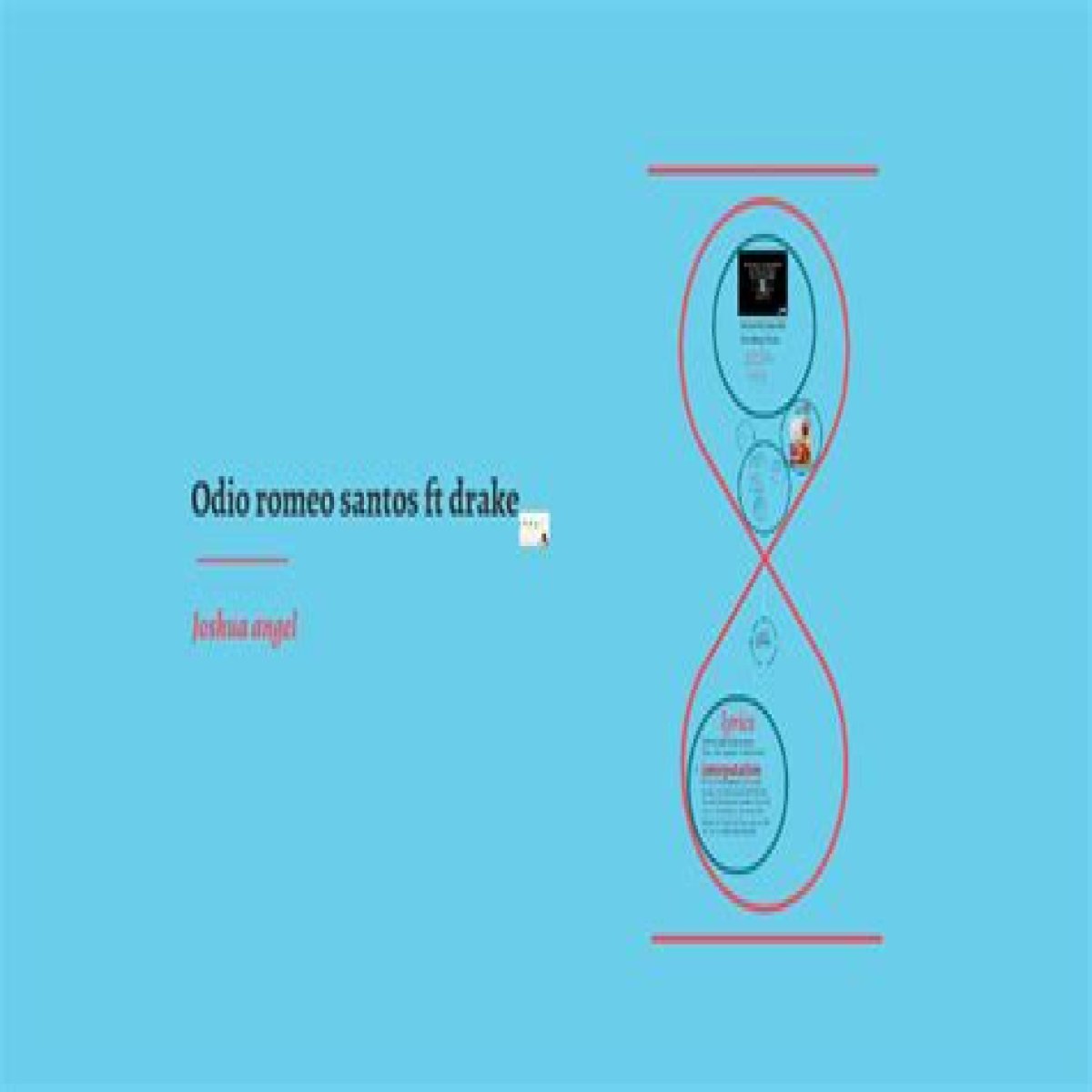Odio, a popular song by Romeo Santos featuring Drake, is a heartfelt and passionate track that delves deep into the complexities of love and heartbreak. The lyrics of the song explore the feelings of pain, longing, and resentment that arise from a failed relationship. Throughout the song, Romeo Santos and Drake express their emotions through powerful and poignant verses, captivating listeners with their raw and emotional performances.
The song carries a melancholic tone, encapsulating the bitterness and lingering sorrows that often accompany love gone wrong. Romeo Santos, known as the “King of Bachata,” skillfully weaves together heartfelt lyrics and smooth melodies, drawing on his expertise in the genre to create a compelling musical narrative. Odio resonates with a wide audience, as many listeners can relate to the pain of lost love and the struggles of moving on.
- Frequently Asked Questions about the song Odio:
- 1. What inspired Romeo Santos to write Odio?
- 2. Why did Romeo Santos choose to collaborate with Drake for this song?
- 3. What is the significance of the title “Odio”?
- 4. What impact did Odio have on Romeo Santos’ career?
- 5. How did Drake’s involvement contribute to the song’s success?
- 6. What emotions does Odio evoke in listeners?
- 7. How does the song portray the complexities of love and heartbreak?
- 8. Are there any cultural references in the song?
- 9. What makes Odio stand out from other love songs?
- 10. How does Odio contribute to the evolution of bachata music?
- 11. What impact has Odio had on fans?
- 12. Has Odio sparked any discussions or debates within the music industry?
Frequently Asked Questions about the song Odio:
1. What inspired Romeo Santos to write Odio?
Romeo Santos drew inspiration for the song Odio from personal experiences and observations of heartbreak. He found solace in expressing his emotions through music and used his talent to convey the raw emotions that come with failed relationships.
2. Why did Romeo Santos choose to collaborate with Drake for this song?
Romeo Santos recognized Drake’s ability to convey emotions and tell stories through his music. Their collaboration was a perfect fusion of Romeo Santos’ expertise in bachata and Drake’s unique lyrical style, resulting in an impactful and memorable collaboration.
3. What is the significance of the title “Odio”?
The title “Odio” translates to “Hate” in English. It symbolizes the intense bitterness that can arise from heartbreak and unfulfilled love. Romeo Santos sets the tone for the song by choosing a provocative title that captures the essence of the emotional journey depicted in the lyrics.
4. What impact did Odio have on Romeo Santos’ career?
Odio further solidified Romeo Santos’ status as a prominent figure in the Latin music industry. The song gained immense popularity and critical acclaim, winning multiple awards and expanding Romeo Santos’ fanbase beyond the traditional bachata audience.
5. How did Drake’s involvement contribute to the song’s success?
Drake’s collaboration brought a fresh perspective and international recognition to the song Odio. His reputation as a global superstar introduced Romeo Santos and bachata music to new audiences, helping to propel the song to the top of international music charts.
6. What emotions does Odio evoke in listeners?
Odio evokes a range of emotions, including sadness, nostalgia, and empathy. The song’s relatable lyrics and soul-stirring melodies create a powerful connection between the listeners and the artists, leaving a lasting impact on their hearts and minds.
7. How does the song portray the complexities of love and heartbreak?
Odio paints a vivid picture of the complexities of love and heartbreak, highlighting the conflicting emotions that arise when a relationship ends. The lyrics capture the feelings of longing, anger, and resentment that often accompany the end of a once passionate romance.
8. Are there any cultural references in the song?
While Odio primarily focuses on universal experiences of love and heartbreak, Romeo Santos occasionally includes cultural references in his lyrics. These references can add depth and relatability, particularly for listeners who are already familiar with the Latin music scene and bachata culture.
9. What makes Odio stand out from other love songs?
Odio stands out from other love songs due to its emotionally charged lyrics, captivating melodies, and the powerful chemistry between Romeo Santos and Drake. The song goes beyond the standard tropes of traditional love songs, delving into the pain and complexity of failed relationships.
10. How does Odio contribute to the evolution of bachata music?
Bachata music has evolved over the years, blending traditional elements with contemporary influences. Odio represents a fusion of bachata with elements of R&B and hip-hop, showcasing the genre’s versatility and ability to adapt to different styles while maintaining its essence.
11. What impact has Odio had on fans?
Odio has resonated deeply with fans, serving as an anthem for those who have experienced heartbreak and failed relationships. The song has become a source of solace and catharsis for listeners, who find comfort in the fact that they are not alone in their feelings of love gone wrong.
12. Has Odio sparked any discussions or debates within the music industry?
Odio sparked discussions within the music industry, especially regarding the merging of genres and the potential for cross-cultural collaborations. The success of the song opened doors for future collaborations between Latin artists and international musicians, breaking down barriers and fostering musical diversity.
